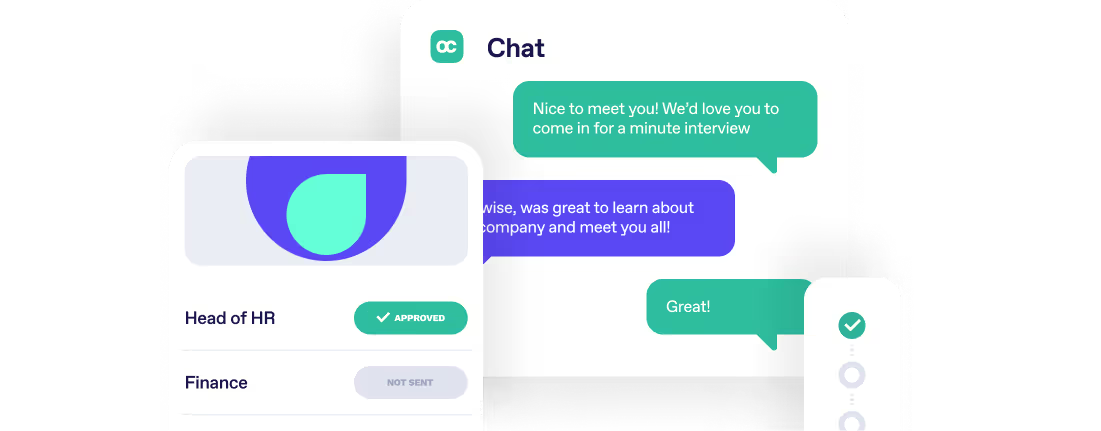How to Embrace Flexible Working



According to the Zenefits State of Flexible Work Arrangements report, 73% of employees said flexible work arrangements increased their satisfaction at work. As well as this, 77% of employees said they would consider flexible work arrangements to be a major factor when evaluating future job opportunities.
Below we’ve outlined some tips on how to adopt this trend to attract top talent, as well as how flexible working can actually help, rather than hinder your business.

What is flexible working?
As mentioned above, flexible working is one of today’s hottest HR trends. But what exactly is it? The term flexible working covers a lot of different types of work patterns. It could mean part-time working, compressed hours, job sharing, early finishes, late starts, working from home, conference calling, hot desking or employees choosing their own hours.
Flexible working hours are an attractive prospect for almost any employee, but some types of workers who may find it particularly appealing include:
- Parents
- Students
- Older workers
- Care-givers
- Millennials
Why adopt the flexible working trend?
It's no secret that many employers are still reluctant to adopt this trend due to a fear of reduced productivity, revenue or company culture. So much so, in fact, that 53% of respondents to the Zenefits survey said there is no official flexible work policy in place at their company.
However, not offering flexible working arrangements could actually be harming your business more than helping it. A recent YouGov survey found that 89% of employees considered flexible working to be a key motivator to their productivity, while a survey by Society of Human Resource Managers (SHRM) found that flexible working benefits can result in higher productivity and employee engagement levels.
When employees feel their needs are being listened to, they become more engaged and thus more likely to stay loyal to a company. The SHRM survey also found that 89% of companies report better retention simply by offering flexible work options.
Not only can offering flexible working options help you retain your current employees, it can also help your business attract top talent. According to the PowWowNow 2019 flexible working survey, 81% of people believe that flexible working would make a job more attractive to them. Additionally, a survey by Deloitte found that 11% of millennial's look for flexibility as their top priority when deciding where they want to work.
Offering flexible working arrangements such as working remotely also has the added benefit of saving both you and your employee time and money. A report from the Future of Work Institute found that implementing flexible work arrangements can result in a reduction of “real estate” costs, or the physical resources necessary for office occupancy. While for an employee, working from home means a reduction in the time and expenses associated with commuting.
Finally, offering flexible working options to employees can actually help to strengthen your company culture. As well as increasing employee job satisfaction, productivity, engagement and reducing commuting costs, offering flexible working options not only demonstrates to your employees that you are aware of their needs, it also demonstrates a level of trust and respect.
INSERT-CTA
How to embrace the flexible working trend
It’s clear that adopting a more flex-friendly working environment has numerous benefits. Once you’ve decided your company is ready to embrace the flexible working trend, there are several things you can do to make the transition smoother – for you and your employees.
1. Get management on board
The Future of Work Institute study found that the most commonly cited barriers to flexible working were cultural in nature. Flexible working arrangements can be undermined by a lack of senior sponsorship, so it’s important that senior level employees both endorse and utilise flexible working options. When management leads by example, employees will follow.
2. Make sure your employees have the right tools
Depending on the type of company you are, your employees may require special equipment or technology in order to perform their job properly. For employees working remotely, ensure they have the equipment and utilities needed so they are constantly contactable. Where possible, provide them with any technology required, such as extra screens or software for their home computers.
3. Be trusting
Offering flexible work solutions is a tacit admission of trust in your employees. It’s important to keep this in mind, and make this clear to your workers. Flexible working involves a mutual trust between employees and employers, and it’s important this trust be maintained at all times. If applicable, focus on results more than actual time spent working, and praise employees for a job well done, regardless of where the work took place.
4. Have support systems in place
Flexibility is more of a fluid negotiation than a structured arrangement, and depends equally on the needs of the individual and the company. Each worker is different, and will adapt to flexible work in different ways. Make sure your HR team is on hand and fully trained to help employees with any questions and concerns they may have about flexible work. This will ensure the process is implemented much more smoothly for your employee and your company.
INSERT-LINE
To give your HR team time to keep up with this and all the latest recruiting trends, we can make your hiring process faster, easier and stress-free. With the help of AI technology, Occupop can greatly reduce your recruitment admin, time and costs, while streamlining the entire process. We’ll post your job descriptions across 20+ recruitment channels, score and filter your CVs and give your hiring team the tools to keep up with this rapidly-changing industry.
Visit www.occupop.com to learn more.
Summary Points
What is flexible working?
The term flexible working covers a lot of different types of work patterns. It could mean part-time working, compressed hours, job sharing, early finishes, late starts, working from home, conference calling, hot desking or employees choosing their own hours.
What are the benefits of flexible working?
- Increased productivity
- Improved engagement
- Long term employee retention
- Talent attraction
- Enhanced employer brand & company culture
How to embrace the flexible working trend
1. Get management on board
2. Make sure your employees have the right tools
3. Be trusting
4. Have support systems in place
Simple. Beautiful.
Recruitment Software.
HR updates sent straight to your inbox
You might also like...


Manage your entire hiring process simply, from engagement to management, hiring and onboarding







Simple. Beautiful.
Recruitment Software.
Recruitment Software.






